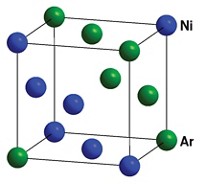Advertisement
Grab your lab coat. Let's get started
Welcome!
Welcome!
Create an account below to get 6 C&EN articles per month, receive newsletters and more - all free.
It seems this is your first time logging in online. Please enter the following information to continue.
As an ACS member you automatically get access to this site. All we need is few more details to create your reading experience.
Not you? Sign in with a different account.
Not you? Sign in with a different account.
ERROR 1
ERROR 1
ERROR 2
ERROR 2
ERROR 2
ERROR 2
ERROR 2
Password and Confirm password must match.
If you have an ACS member number, please enter it here so we can link this account to your membership. (optional)
ERROR 2
ACS values your privacy. By submitting your information, you are gaining access to C&EN and subscribing to our weekly newsletter. We use the information you provide to make your reading experience better, and we will never sell your data to third party members.
Physical Chemistry
Missing Xenon Still At Large
Computational study shows xenon oxides would be unstable in Earth’s mantle
by Elizabeth K. Wilson
November 12, 2012
| A version of this story appeared in
Volume 90, Issue 46
A computational study of the stability of xenon oxides has implications for the “missing xenon problem,” which refers to the fact that Earth’s atmosphere is depleted of xenon relative to other noble gases (Nat. Chem., DOI: 10.1038/nchem.1497). Studies have shown that xenon can form oxides and silicates under high temperatures and pressures. Scientists also have hypothesized that the missing atmospheric xenon might be sequestered as oxides or silicates deep inside Earth’s mantle. A study of xenon oxides by an international team led by Artem R. Oganov of SUNY Stony Brook predicts that XeO, XeO2, and XeO3 will become thermodynamically stable at pressures above 83 gigapascals (about 820,000 atm), such as those in the mantle. However, the compounds are strong oxidants and couldn’t exist in Earth’s mantle, which is a strongly reducing environment because of metallic iron, Oganov explains. Additionally, the study shows that xenon silicates, such as XeSiO4, will spontaneously decompose at the high pressures in the mantle. The researchers do give some hope for the mantle sequestration hypothesis: They suggest that xenon could be trapped in tiny air pockets formed by lattice defects and grain boundaries.




Join the conversation
Contact the reporter
Submit a Letter to the Editor for publication
Engage with us on Twitter